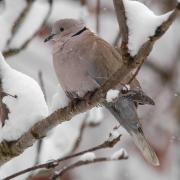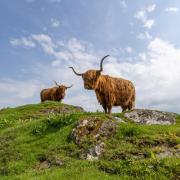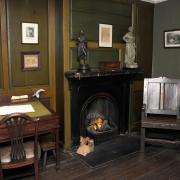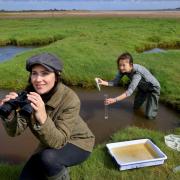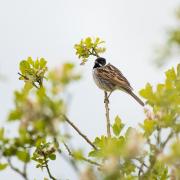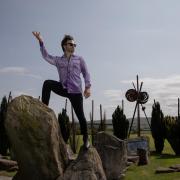The UK has around 100 mammals, but only around 50 of these are classed as native, the rest were introduced by man. So as a wildlife photographer I’m always a bit disappointed when the rest of Europe have over 260 species and the likes of Africa have well over 1,000 mammal species. What makes things worse is many of ours are mainly nocturnal, so trying to see them, let alone photograph them, can be a bit of a challenge. If we break our numbers down further, there are 18 species of bat, many of which are not found in our region. That leaves us with around 28 native terrestrial mammals and two native marine mammals. From that small number it’s our eight native carnivores that appeal to me and which I enjoy spending time trying to photograph. The wildcat and polecat tend not to be found in our region, although hybrid polecat-ferrets are. So that leaves fox, badger, otter, stoat, weasel and pine marten, and it’s the latter species where there is some good news for a change. After years of persecution a small number were released into the Galloway Forest Park back in the early 1980s and are doing well, and have now spread throughout much of Dumfries & Galloway.

Although their numbers have increased, pine martens are still one of our rarest mammals in the UK, but here in Galloway you probably have a better chance than elsewhere of seeing one. With trail cameras being a very affordable recording tool for any wildlife enthusiast, pine martens have been regularly caught on camera at feeders, both during the day and at night. A pine marten is comparable in size to the average domestic cat. Its heart-shaped face, big brown eyes, slim, sinuous body, rich chestnut-brown coat turning darker in summer, flamboyant apricot-coloured bib and long tail, bushy in winter, help distinguish it from its mustelid cousins I mentioned earlier. I have been very fortunate to have spent quite a bit of time photographing them over the last few years, and as such you soon get to know individuals as the markings on their bib are unique to each animal. Even with their numbers reportedly increasing, the only figure I could find was an estimated 3,700 adult animals in Scotland, so still a rare creature, and don’t automatically assume you will see one on your next trip to the countryside. The still images here don’t show you just how fast and agile these creatures are. They can leap from branch to branch high in the tree canopy with ease and on the ground they are extremely fast. A rabbit or grey squirrel would be an easy target, and it’s on the ground where they do most of their hunting. Being omnivores they have a varied diet including fruit, fungi, insects and small rodents, such as voles and mice. Even bird eggs are on the menu.

In general pine martens are notoriously difficult to spot. So you might like to treat yourself to a trail camera and with the landowner’s permission site it in your local wood with a bit of food for bait and see if they are present. They are mostly nocturnal but are seen regularly in the early and late hours of the day in some locations, especially in summer when they are most active. Even without a trail camera, just looking for, and discovering their signs can be just as rewarding – look for footprints in mud or snow, scats on large tree stumps or boulders, even lost fur in the undergrowth.

Stoats and weasels are a close relative of the pine marten and even although they are regularly seen during the day, they have been my nemesis for years. It’s not that I haven’t seen them on numerous occasions, it’s just they are so fast and agile and disappear as quick as they appear. That was until recently when I was in the right place, at the right time, and had a camera ready. This particular stoat was hunting in and out of a pile of fallen logs, and boy do they move fast, it was a case of; now you see me, now you don’t. This particular individual appeared to have got the scent of a wood mouse and chased it up, down, across and along through the log pile for around 15 minutes, before finally giving up after the mouse left the area at breakneck speed out of sight of the stoat, to live for another day at least! Weasels I too have seen on numerous occasions but as yet I’ve never managed any decent pictures




